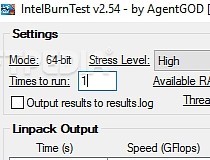
The max temperature of the RPi 2 main processor after 5 minutes of stress test was 71.9☌: The temperature of Raspberry Pi is visualized with a FLIR 4 thermal camera: Raspberry Pi 2 thermal imaging $ sysbench -test=cpu -cpu-max-prime=100000 -num-threads=4 run To stress test the RPi, I launched the OpenGL 2.1 test of GeeXLab as well as Sysbench at the same time (with 100000 for the max prime number): So it’s interesting to see the impact of higher clock speeds on CPU/GPU temperature when the Raspberry Pi is stressed by both Sysbench + GeeXLab. The GPU, the Videocore IV is overclocked compared to the RPi 2: 400MHz vs 250MHz. The Raspberry Pi 3 comes with a new ARM Cortex A53 CPU clocked at 1200MHz. This test requires the latest Raspbian with OpenGL 2.1 support. Total time taken by event execution: 480.2085Įxecution time (avg/stddev): 120.0521/0.02įor the GPU benchmark, I used the OpenGL 2.1 test that comes with GeeXLab: Maximum prime number checked in CPU test: 20000 Sysbench 0.4.12: multi-threaded system evaluation benchmark The output of Sysbench for the Raspberry Pi 3 is: $ sysbench -test=cpu -cpu-max-prime=20000 -num-threads=4 run Now that Sysbench is installed, we can launch the multi-threaded (4 threads) CPU test with: The installation of Sysbench on Raspbian is rather easy: To benchmark the CPU, I used Sysbench, a cross-platform and multi-threaded benchmark tool.

Let’s benchmark it against the Raspberry Pi 2 board. The new Raspberry Pi 3 board comes with a new processor and higher clock speeds.


 0 kommentar(er)
0 kommentar(er)
